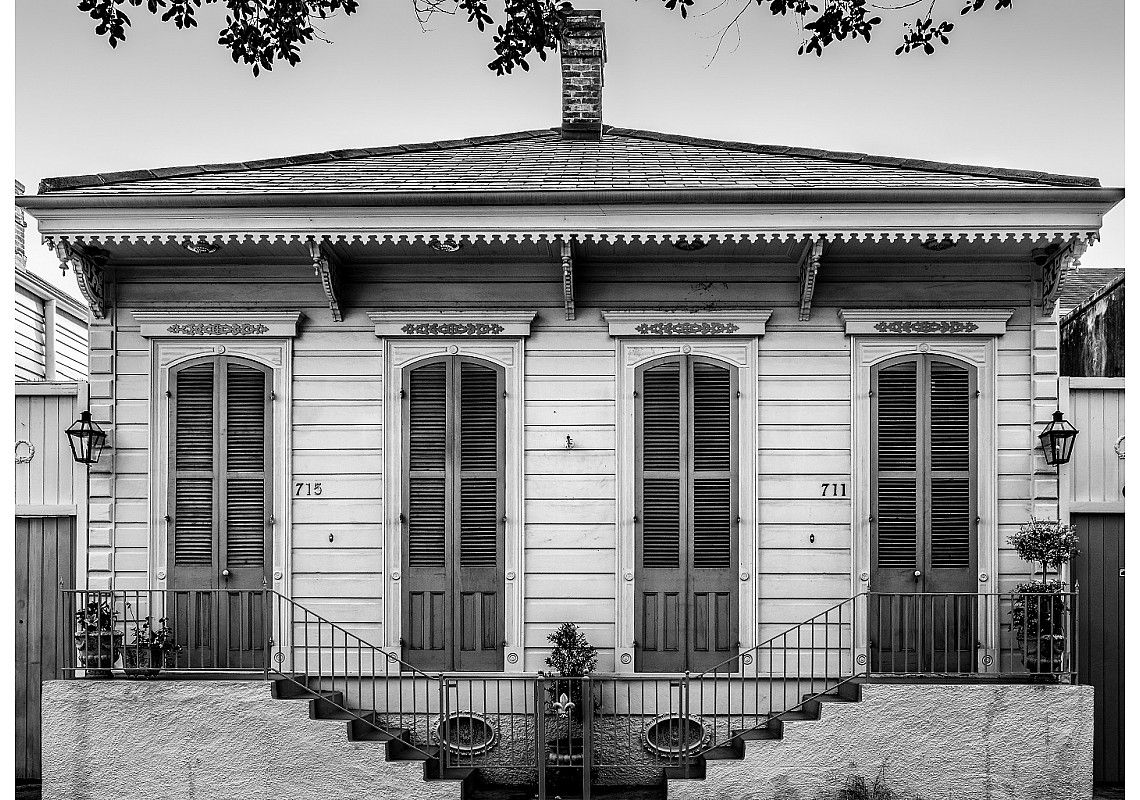History of the Shotgun House
- October 10, 2020
- 10334
- 0
- 0
Few things reflect Louisiana's unique architecture better than the shotgun house. Second only to the plantation home in terms of familiarity, the shotgun house has an interesting history that reveals much about Louisiana culture. If you pay us a visit, you'll likely encounter many examples of this modest dwelling on your trip.
How the Shotgun House Got Its Name
Ask someone at random how the shotgun house got its name, and you'll probably get the common answer. It is said that because these houses have no hallways, a shotgun could be fired through the open front door and the shot would pass right through every room and out the open back door without hitting anything. It's a story that makes sense when you observe how these houses are built, but the truth might be more spiritual in nature. Some contend that "shotgun" in this case is a corruption of the West African word "shogon." This word literally translates to "God's House." It is significant when you realize that this style of home likely appeared in New Orleans with the presence of Haitian slaves who were brought to the city by plantation owners forced to flee Haiti in 1791. Many free African men and women also came to the city, and they built the style of home to which they were accustomed. Spirituality has always run deep in the Crescent City and throughout Louisiana. A "shogon" was more than just a home. It was the spiritual center of the family unit. Today, this attitude still prevails in many Louisiana families regardless of the size and style of their home. Home is a place where everything comes together around a nexus of faith and family.
The Origin of the Shotgun House
The existing research indicates that the shotgun house originated in the West Indies. A number of these homes were noted in St. Domingue, or present day Haiti, by historians. They were mostly occupied by slaves of the region who had limited means to construct a dwelling. It was necessary for these houses to provide essential shelter, but they also had to be practical. It was also important to include as many rooms as possible in a very finite amount of space. This would provide living space for more people. Finally, homes for these people had to be simple to construct. What is interesting is that shotgun houses in the United States do not uniquely belong to Louisiana. They can also be found throughout the Midwest in major cities like Chicago and in the coastal regions of Florida. Perhaps the genuine reason shotgun houses appeared in the United States is a matter of economy. A quintessential part of the American Dream is to own a home. The pride of ownership was no less important to the original residents of New Orleans than it is to people today. A shotgun house could be an affordable yet elegant dwelling, one that afforded its inhabitants a measure of dignity.
The Style of the Shotgun House
Shotgun houses are rather unique forms of architecture in that they share some elements that do not vary from example to example. For starters, these houses are defined by their recognizable rectangular shape. The width of the shotgun house almost never exceeds 12' from outer wall to outer wall. There are doors at either end of the house and the rooms inside are laid out end to end. There are typically no hallways in a shotgun house. Each room opens directly onto the next. It may seem like a strange design, but once again practical concerns explain the choices. When the front and rear doors of the shotgun house are opened, a draft is created which allows air to blow through the entire dwelling. That is very important when you realize the original builders of dwellings like these did not have access to air conditioning.
Shotgun Houses in New Orleans
As New Orleans began to grow throughout the 1800's and the early 20th Century, the shotgun houses of early residents began to assume their place in the city's mythology. There were many residents of New Orleans who lived humbly. Some were simply families below the poverty line. Shotgun houses were still one of the most affordable to build. There was also a matter of space. If you've ever been to the Big Easy then you understand that it's not so big after all. The city center, or Vieux Carre, is a very small and compact area. Today, New Orleans has expanded to include many suburban areas. But in the early days there was a limited amount of space in the city. Shotgun houses could offer housing to more people. Why they sustained their place in the city's architecture is a matter of debate. What is known for certain is that the colorful residents of New Orleans found ways to make them unique. Today, the facades of shotgun houses can be designed in a variety of architectural styles ranging from Italian to Greek to traditional French. Interiors have been redefined to include short hallways and other design elements. There are even variations of the shotgun house today such as the "camelback." This type of shotgun house has a second floor at the rear of the dwelling. What many residents have discovered is that one of these quaint homes can instill a sense of community pride. They reflect our heritage here in Louisiana, and anyone around these parts will tell you how important that is.

